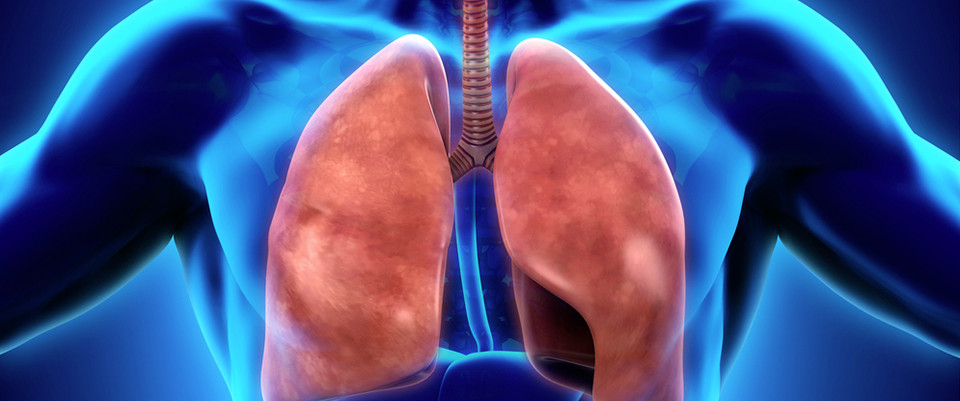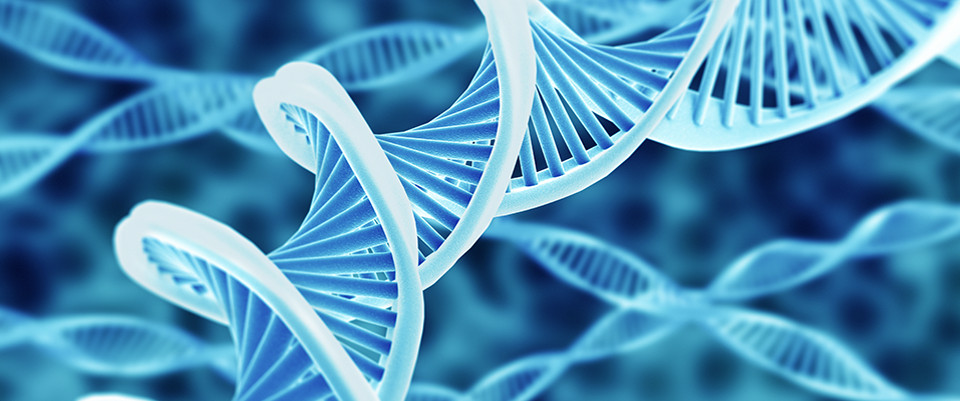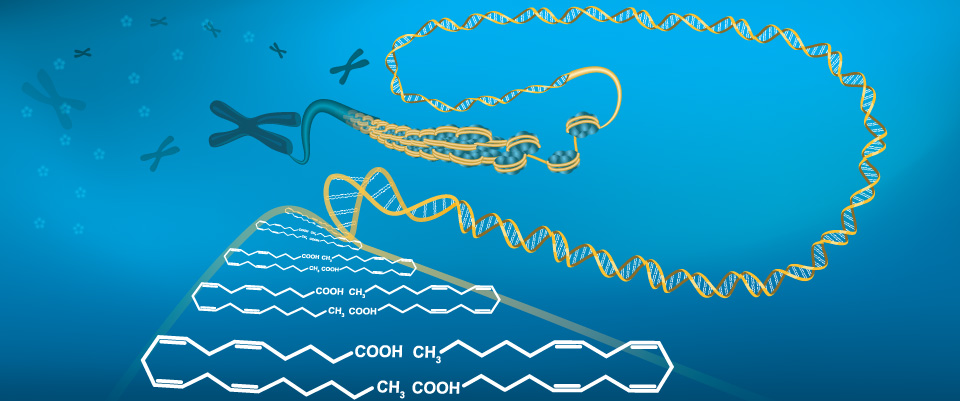PubMed
Fruit quality and volatile constituents of a new very early-ripening pummelo (<em>Citrus maxima</em>) cultivar 'Liuyuezao'
Front Plant Sci. 2023 Jan 9;13:1089009. doi: 10.3389/fpls.2022.1089009. eCollection 2022.ABSTRACT'Liuyuezao' (LYZ) pummelo (Citrus maxima) originated from a spontaneous bud sport on a 'Guanxi' (GXB) pummelo tree and was released as a new very early-season cultivar. The objective of this study was to present the sensory and nutritional profiles of LYZ fruits, and compare it with other major commercialized pummelo cultivars including GXB, 'Sanhong' (SH) and 'Hongrou' (HR). LYZ had higher contents of organic acids (12.01 mg/g), phenols (669.01 mg/L), vitamin C (75.73 mg/100 mL) and stronger antioxidant capacity (77.65 mg/100 mL) but lower levels of soluble sugars (62.85 mg/g), carotenoids (0.25 mg/L) and flavonoids (46.3 mg/L) when compared to the other pummelos. Moreover, a smaller number (49) and much less content (7.63) of fruit volatiles were detected in LYZ than them in GXB, SH and HR. The relatively high levels of fructose (20.6 mg/g) and organic acids and low levels of volatile compounds in LYZ mainly contributed to its sweet and mildly sour taste and moderate aroma of pummelo note. LYZ is presented as an alternative pummelo cultivar with the potential for commercialization.PMID:36699855 | PMC:PMC9868557 | DOI:10.3389/fpls.2022.1089009
Analysis of chemotypes and their markers in leaves of core collections of <em>Eucommia ulmoides</em> using metabolomics
Front Plant Sci. 2023 Jan 9;13:1029907. doi: 10.3389/fpls.2022.1029907. eCollection 2022.ABSTRACTThe leaves of Eucommia ulmoides contain various active compunds and nutritional components, and have successively been included as raw materials in the Chinese Pharmacopoeia, the Health Food Raw Material Catalogue, and the Feed Raw Material Catalogue. Core collections of E. ulmoides had been constructed from the conserved germplasm resources basing on molecular markers and morphological traits, however, the metabolite diversity and variation in this core population were little understood. Metabolite profiles of E. ulmoides leaves of 193 core collections were comprehensively characterized by GC-MS and LC-MS/MS based non-targeted metabolomics in present study. Totally 1,100 metabolites were identified and that belonged to 18 categories, and contained 120 active ingredients for traditional Chinese medicine (TCM) and 85 disease-resistant metabolites. Four leaf chemotypes of the core collections were established by integrated uses of unsupervised self-organizing map (SOM), supervised orthogonal partial least squares discriminant analysis (OPLS-DA) and random forest (RF) statistical methods, 30, 23, 43, and 23 chemomarkers were screened corresponding to the four chemotypes, respectively. The morphological markers for the chemotypes were obtained by weighted gene co-expression network analysis (WGCNA) between the chenomarkers and the morphological traits, with leaf length (LL), chlorophyll reference value (CRV), leaf dentate height (LDH), and leaf thickness (LT) corresponding to chemotypes I, II, III, and IV, respectively. Contents of quercetin-3-O-pentosidine, isoquercitrin were closely correlated to LL, leaf area (LA), and leaf perimeter (LP), suggesting the quercetin derivatives might influence the growth and development of E. ulmoides leaf shape.PMID:36699853 | PMC:PMC9868706 | DOI:10.3389/fpls.2022.1029907
Indigenous and commercial isolates of arbuscular mycorrhizal fungi display differential effects in <em>Pyrus betulaefolia</em> roots and elicit divergent transcriptomic and metabolomic responses
Front Plant Sci. 2023 Jan 9;13:1040134. doi: 10.3389/fpls.2022.1040134. eCollection 2022.ABSTRACTBACKGROUND: Arbuscular mycorrhizal fungi (AMF) are beneficial soil fungi which can effectively help plants with acquisition of mineral nutrients and water and promote their growth and development. The effects of indigenous and commercial isolates of arbuscular mycorrhizal fungi on pear (Pyrus betulaefolia) trees, however, remains unclear.METHODS: Trifolium repens was used to propagate indigenous AMF to simulate spore propagation in natural soils in three ways: 1. the collected soil was mixed with fine roots (R), 2. fine roots were removed from the collected soil (S), and 3. the collected soil was sterilized with 50 kGy 60Co γ-radiation (CK). To study the effects of indigenous AMF on root growth and metabolism of pear trees, CK (sterilized soil from CK in T. repens mixed with sterilized standard soil), indigenous AMF (R, soil from R in T. repens mixed with sterilized standard soil; S, soil from S in T. repens mixed with sterilized standard soil), and two commercial AMF isolates (Rhizophagus intraradices(Ri) and Funneliformis mosseae (Fm)) inoculated in the media with pear roots. Effects on plant growth, root morphology, mineral nutrient accumulation, metabolite composition and abundance, and gene expression were analyzed.RESULTS: AMF treatment significantly increased growth performance, and altered root morphology and mineral nutrient accumulation in this study, with the S treatment displaying overall better performance. In addition, indigenous AMF and commercial AMF isolates displayed common and divergent responses on metabolite and gene expression in pear roots. Compared with CK, most types of flavones, isoflavones, and carbohydrates decreased in the AMF treatment, whereas most types of fatty acids, amino acids, glycerolipids, and glycerophospholipids increased in response to the AMF treatments. Further, the relative abundance of amino acids, flavonoids and carbohydrates displayed different trends between indigenous and commercial AMF isolates. The Fm and S treatments altered gene expression in relation to root metabolism resulting in enriched fructose and mannose metabolism (ko00051), fatty acid biosynthesis (ko00061) and flavonoid biosynthesis (ko00941).CONCLUSIONS: This study demonstrates that indigenous AMF and commercial AMF isolates elicited different effects in pear plants through divergent responses from gene transcription to metabolite accumulation.PMID:36699828 | PMC:PMC9868765 | DOI:10.3389/fpls.2022.1040134
Single-Cell Mass Spectrometry of Metabolites and Proteins for Systems and Functional Biology
Neuromethods. 2022;184:87-114. doi: 10.1007/978-1-0716-2525-5_5. Epub 2022 Aug 11.ABSTRACTMolecular composition is intricately intertwined with cellular function, and elucidation of this relationship is essential for understanding life processes and developing next-generational therapeutics. Technological innovations in capillary electrophoresis (CE) and liquid chromatography (LC) mass spectrometry (MS) provide previously unavailable insights into cellular biochemistry by allowing for the unbiased detection and quantification of molecules with high specificity. This chapter presents our validated protocols integrating ultrasensitive MS with classical tools of cell, developmental, and neurobiology to assess the biological function of important biomolecules. We use CE and LC MS to measure hundreds of metabolites and thousands of proteins in single cells or limited populations of tissues in chordate embryos and mammalian neurons, revealing molecular heterogeneity between identified cells. By pairing microinjection and optical microscopy, we demonstrate cell lineage tracing and testing the roles the dysregulated molecules play in the formation and maintenance of cell heterogeneity and tissue specification in frog embryos (Xenopus laevis). Electrophysiology extends our workflows to characterizing neuronal activity in sections of mammalian brain tissues. The information obtained from these studies mutually strengthen chemistry and biology and highlight the importance of interdisciplinary research to advance basic knowledge and translational applications forward.PMID:36699808 | PMC:PMC9872963 | DOI:10.1007/978-1-0716-2525-5_5
Heptadecanoic acid and pentadecanoic acid crosstalk with fecal-derived gut microbiota are potential non-invasive biomarkers for chronic atrophic gastritis
Front Cell Infect Microbiol. 2023 Jan 9;12:1064737. doi: 10.3389/fcimb.2022.1064737. eCollection 2022.ABSTRACTBACKGROUND: Chronic atrophic gastritis (CAG), premalignant lesions of gastric cancer (GC), greatly increases the risk of GC. Gastroscopy with tissue biopsy is the most commonly used technology for CAG diagnosis. However, due to the invasive nature, both ordinary gastroscope and painless gastroscope result in a certain degree of injury to the esophagus as well as inducing psychological pressure on patients. In addition, patients need fast for at least half a day and take laxatives.METHODS: In this study, fecal metabolites and microbiota profiles were detected by metabolomics and 16S rRNA V4-V5 region sequencing.RESULTS: Alteration of fecal metabolites and microbiota profiles was found in CAG patients, compared with healthy volunteers. To identify the most relevant features, 7 fecal metabolites and 4 microbiota were selected by random forest (RF), from A and B sample sets, respectively. Furthermore, we constructed support vector machines (SVM) classifification model using 7 fecal metabolites or 4 gut microbes, or 7 fecal metabolites with 4 gut microbes, respectively, on C sample set. The accuracy of classifification model was 0.714, 0.857, 0.857, respectively, and the AUC was 0.71, 0.88, 0.9, respectively. In C sample set, Spearman's rank correlation analysis demonstrated heptadecanoic acid and pentadecanoic acid were signifificantly negatively correlated to Erysipelotrichaceae_UCG-003 and Haemophilus, respectively. We constructed SVM classifification model using 2 correlated fecal metabolites and 2 correlated gut microbes on C sample set. The accuracy of classification model was 0.857, and the AUC was 0.88.CONCLUSION: Therefore, heptadecanoic acid and pentadecanoic acid, crosstalk with fecal-derived gut microbiota namely Erysipelotrichaceae_UCG-003 and Haemophilus, are potential non-invasive biomarkers for CAG diagnosis.PMID:36699724 | PMC:PMC9868245 | DOI:10.3389/fcimb.2022.1064737
Integrated analysis of transcriptome and metabolome data reveals insights for molecular mechanisms in overwintering Tibetan frogs, <em>Nanorana parkeri</em>
Front Physiol. 2023 Jan 9;13:1104476. doi: 10.3389/fphys.2022.1104476. eCollection 2022.ABSTRACTNanorana parkeri (Anura, Dicroglossidae) is a unique frog living at high altitude on the Tibetan plateau where they must endure a long winter dormancy at low temperatures without feeding. Here, we presented a comprehensive transcriptomic and metabolomic analysis of liver tissue from summer-active versus overwintering N. parkeri, providing the first broad analysis of altered energy metabolism and gene expression in this frog species. We discovered that significantly up-regulated genes (2,397) in overwintering frogs mainly participated in signal transduction and immune responses, phagosome, endocytosis, lysosome, and autophagy, whereas 2,169 down-regulated genes were mainly involved in metabolic processes, such as oxidation-reduction process, amino acid metabolic process, fatty acid metabolic process, and TCA cycle. Moreover, 35 metabolites were shown to be differentially expressed, including 22 down-regulated and 13 up-regulated in winter. These included particularly notable reductions in the concentrations of most amino acids. These differentially expressed metabolites were mainly involved in amino acid biosynthesis and metabolism. To sum up, these findings suggest that gene expression and metabolic processes show adaptive regulation in overwintering N. parkeri, that contributes to maintaining homeostasis and enhancing protection in the hypometabolic state. This study has greatly expanded our understanding of the winter survival mechanisms in amphibians.PMID:36699683 | PMC:PMC9868574 | DOI:10.3389/fphys.2022.1104476
The role of serine metabolism in lung cancer: From oncogenesis to tumor treatment
Front Genet. 2023 Jan 9;13:1084609. doi: 10.3389/fgene.2022.1084609. eCollection 2022.ABSTRACTMetabolic reprogramming is an important hallmark of malignant tumors. Serine is a non-essential amino acid involved in cell proliferation. Serine metabolism, especially the de novo serine synthesis pathway, forms a metabolic network with glycolysis, folate cycle, and one-carbon metabolism, which is essential for rapidly proliferating cells. Owing to the rapid development in metabolomics, abnormal serine metabolism may serve as a biomarker for the early diagnosis and pathological typing of tumors. Targeting serine metabolism also plays an essential role in precision and personalized cancer therapy. This article is a systematic review of de novo serine biosynthesis and the link between serine and folate metabolism in tumorigenesis, particularly in lung cancer. In addition, we discuss the potential of serine metabolism to improve tumor treatment.PMID:36699468 | PMC:PMC9868472 | DOI:10.3389/fgene.2022.1084609
Comparative plasma and urine metabolomics analysis of juvenile and adult canines
Front Vet Sci. 2023 Jan 9;9:1037327. doi: 10.3389/fvets.2022.1037327. eCollection 2022.ABSTRACTBACKGROUND AND AIMS: The metabolomic profile of a biofluid can be affected by age, and thus provides detailed information about the metabolic alterations in biological processes and reflects the in trinsic rule regulating the growth and developmental processes.METHODS: To systemically investigate the characteristics of multiple metabolic profiles associated with canine growth, we analyzed the metabolomics in the plasma and urine samples from 15 young and 15 adult beagle dogs via UHPLC-Q-TOFMS-based metabolomics. Blood routine and serum biochemical analyses were also performed on fasting blood samples.RESULTS: The metabolomics results showed remarkable differences in metabolite fingerprints both in plasma and urine between the young and adult groups. The most obvious age-related metabolite alterations include decreased serumlevels of oxoglutaric acid and essential amino acids and derivatives but increased levels of urine levels of O-acetylserine. These changes primarily involved in amino acid metabolism and bile secretion pathways. We also found that the levels of glutamine were consistently higher in both serum and urine of adults, while N-acetylhistamine and uracil concentrations were much lower in the adult group compared to younger ones.CONCLUSION: Our study provides a whole metabolic profile of serum and urine characteristics of young and adult canines, identifying several metabolites that were significantly associated with age change, which provides theoretical support for the nutrition-related research and age-related homeostasis maintenance in dogs.PMID:36699333 | PMC:PMC9868312 | DOI:10.3389/fvets.2022.1037327
A strategy for healthy eating habits of daily fruits revisited: A metabolomics study
Curr Res Food Sci. 2023 Jan 12;6:100440. doi: 10.1016/j.crfs.2023.100440. eCollection 2023.ABSTRACTMany people peel fruits, commonly persimmon, grape, apple, and peach, before eating as table fruits. Differences of bioactive compounds between peels and pulps of daily fruits are widely known but limited to individual compound because understanding of differences in their global metabolites is lack. We employed 1H NMR-based metabolomics to explore the global metabolite differences between their peels and pulps from the fruits, which included changes of diverse metabolites in persimmon after harvest ripening. Of diverse metabolites observed among the fruits tested, various health-beneficial metabolites were present in the peels rather than the pulps and their classes were dependent on the type of fruit: gallocatechin, epicatechin and epigallocatehin only in persimmon, apple, and peach, respectively; quercetin only in persimmon and apple; kaempferol only in persimmon; chlorogenic acid only in grape and peach; neochlorogenic acid only in apple and peach; p-coumaric acid only in grape; phloridzin and catechin only in apple. These metabolites in the peels of each fruits were strongly correlated with free radical-scavenging activity and delay of carbohydrate digestion. Therefore, intake of whole fruits, rather than removal of their peels, were recommended for potential improvement of healthy lifespan and human wellness. This study highlights the critical role of metabolomic studies in simultaneous determinations of diverse and intrinsic metabolites in different types of fruits and thus providing a strategy for healthy eating habits of daily fruits.PMID:36699116 | PMC:PMC9868340 | DOI:10.1016/j.crfs.2023.100440
An evaluation of homeostatic plasticity for ecosystems using an analytical data science approach
Comput Struct Biotechnol J. 2023 Jan 4;21:869-878. doi: 10.1016/j.csbj.2023.01.001. eCollection 2023.ABSTRACTThe natural world is constantly changing, and planetary boundaries are issuing severe warnings about biodiversity and cycles of carbon, nitrogen, and phosphorus. In other views, social problems such as global warming and food shortages are spreading to various fields. These seemingly unrelated issues are closely related, but it can be said that understanding them in an integrated manner is still a step away. However, progress in analytical technologies has been recognized in various fields and, from a microscopic perspective, with the development of instruments including next-generation sequencers (NGS), nuclear magnetic resonance (NMR), gas chromatography-mass spectrometry (GC/MS), and liquid chromatography-mass spectrometry (LC/MS), various forms of molecular information such as genome data, microflora structure, metabolome, proteome, and lipidome can be obtained. The development of new technology has made it possible to obtain molecular information in a variety of forms. From a macroscopic perspective, the development of environmental analytical instruments and environmental measurement facilities such as satellites, drones, observation ships, and semiconductor censors has increased the data availability for various environmental factors. Based on these background, the role of computational science is to provide a mechanism for integrating and understanding these seemingly disparate data sets. This review describes machine learning and the need for structural equations and statistical causal inference of these data to solve these problems. In addition to introducing actual examples of how these technologies can be utilized, we will discuss how to use these technologies to implement environmentally friendly technologies in society.PMID:36698969 | PMC:PMC9860287 | DOI:10.1016/j.csbj.2023.01.001
Metabolomics as a potential tool for monitoring patients with aneurysmal subarachnoid hemorrhage
Front Neurol. 2023 Jan 9;13:1101524. doi: 10.3389/fneur.2022.1101524. eCollection 2022.ABSTRACTMetabolomics has evolved into a particularly useful tool to study interactions between metabolites and serves as an aid in unraveling the complexity of entire metabolomes. Nonetheless, it is increasingly viewed as a methodology with practical applications in the clinical setting, where identifying and quantifying biomarkers of interest could prove useful for diagnostics. Starting from a concise overview of the most prominent analytical techniques employed in metabolomics, herein we present a review of its application in studies of brain metabolism and cerebrovascular diseases, paying most attention to its uses in researching aneurysmal subarachnoid hemorrhage. Both animal models and human studies are considered, and metabolites identified as potential biomarkers are highlighted.PMID:36698893 | PMC:PMC9868237 | DOI:10.3389/fneur.2022.1101524
Ramadan diurnal intermittent fasting is associated with significant plasma metabolomics changes in subjects with overweight and obesity: A prospective cohort study
Front Nutr. 2023 Jan 9;9:1008730. doi: 10.3389/fnut.2022.1008730. eCollection 2022.ABSTRACTINTRODUCTION: During the holy month of Ramadan, adult healthy Muslims are mandated to abstain from dawn to sunset, with free eating at night hours that may extend up to 12 h. The current work was designed to investigate the metabolomics changes incurred upon the observance of Ramadan diurnal intermittent fasting (RDIF).METHODS: Twenty-five metabolically healthy participants with overweight and obesity (7 females and 18 males, with a mean age of 39.48 ± 10.0 years) were recruited for the study and were followed before and at the end of RDIF month. Dietary, anthropometric, biochemical, and physical activity assessments were performed before and at the end of the fasting month. The metabolomic assay was performed using liquid chromatography-mass spectrometry for the two-time points.RESULTS AND DISCUSSION: Metabolomics assay revealed a significant reduction in a few metabolites. The analysis revealed that 27 metabolites differed significantly (P < 0.05) between pre-and post-RDIF. Among the differentially abundant metabolites, 23 showed a decrease with fasting, these included several amino acids such as aspartame, tryptophan, phenylalanine, histidine, and other metabolites including valeric acid, and cortisol. On the other hand, only four metabolites showed increased levels after RDIF including traumatic acid, 2-pyrrolidinone, PC[18:1(9Z)/18:1(9Z)], and L-sorbose. The MetaboAnalyst® platform reported that the top enriched metabolic pathways included: (1) histidine metabolism; (2) folate biosynthesis (3) phenylalanine, tyrosine, and tryptophan biosynthesis; (4) aminoacyltRNA biosynthesis; (5) caffeine metabolism; (6) vitamin B6 metabolism; and several other pathways relating to lipid metabolisms such as arachidonic acid metabolism, glycerophospholipid metabolism, and linoleic acid metabolism. In conclusion, RDIF entails significant changes in various metabolic pathways that reflect different dietary and lifestyle behaviors practiced during the fasting month.PMID:36698470 | PMC:PMC9868699 | DOI:10.3389/fnut.2022.1008730
Dietary supplement of mushrooms promotes SCFA production and moderately associates with IgA production: A pilot clinical study
Front Nutr. 2023 Jan 9;9:1078060. doi: 10.3389/fnut.2022.1078060. eCollection 2022.ABSTRACTBACKGROUND: Mushrooms are rich in dietary fiber, and fiber intake has been reported to increase the levels of short-chain fatty acids (SCFAs). It has also been reported that SCFAs promote immunoglobulin A (IgA) production, indicating involvement in systemic immunity.OBJECTIVES: The objective of this study was to evaluate the effects of mushroom consumption on the amount of intestinal IgA. We also aimed to comprehensively evaluate the gut microbiota and intestinal metabolome and to conduct an exploratory analysis of their relationship with IgA.METHODS: Healthy adults (n = 80) were enrolled in a parallel group trial. Participants consumed a diet with mushrooms or a placebo diet once daily for 4 weeks. Gut microbiota profiles were assessed by sequencing the bacterial 16S ribosomal RNA-encoding gene. Intestinal metabolome profiles were analyzed using capillary electrophoresis-time of flight mass spectrometry (CE-TOFMS).RESULTS: Mushroom consumption tended to increase IgA levels at 4 weeks of consumption compared to those in the control group (p = 0.0807; Hedges' g = 0.480). The mushroom group had significantly higher levels of intestinal SCFAs, such as butyrate and propionate, than the control group (p = 0.001 and 0.020; Hedges' g = 0.824 and 0.474, respectively). Correlation analysis between the changes in the amount of intestinal IgA and the baseline features of the intestinal environment showed that the increasing amount of intestinal IgA was positively correlated with the baseline levels of SCFAs (Spearman's R = 0.559 and 0.419 for butyrate and propionate, respectively).CONCLUSION: Consumption of mushrooms significantly increased the intestinal SCFAs and IgA in some subjects. The increase in intestinal IgA levels was more prominent in subjects with higher SCFA levels at baseline. This finding provides evidence that mushroom alters the intestinal environment, but the intensity of the effect still depends on the baseline intestinal environment. This trial was registered at www.umin.ac.jp as UMIN000043979.PMID:36698463 | PMC:PMC9868702 | DOI:10.3389/fnut.2022.1078060
Nicotinamide Mononucleotide Ameliorates Sleep Deprivation-Induced Gut Microbiota Dysbiosis and Restores Colonization Resistance against Intestinal Infections
Adv Sci (Weinh). 2023 Jan 25:e2207170. doi: 10.1002/advs.202207170. Online ahead of print.ABSTRACTGut microbiota-mediated colonization resistance (CR) is crucial in protecting the host from intestinal infections. Sleep deprivation (SD) is an important contributor in the disturbances of intestinal homeostasis. However, whether and how SD affects host CR remains largely unknown. Here, it is shown that SD impairs intestinal CR in mice, whereas nicotinamide mononucleotide (NMN) supplementation restores it. Microbial diversity and metabolomic analyses suggest that gut microbiota and metabolite profiles in SD-treated mice are highly shaped, whereas NMN reprograms these differences. Specifically, the altered gut microbiota in SD mice further incurs the disorder of secondary bile acids pool accompanied by a decrease in deoxycholic acid (DCA). Conversely, NMN supplementation retakes the potential benefits of DCA, which is associated with specific gut microbiota involved in primary bile acids metabolic flux. In animal models of infection, DCA is effective in preventing and treating bacterial infections when used alone or in combination with antibiotics. Mechanistically, DCA alone disrupts membrane permeability and aggravates oxidative damage, thereby reducing intestinal pathogen burden. Meanwhile, exogenous DCA promotes antibiotic accumulation and destroys oxidant-antioxidant system, thus potentiating antibiotic efficacy. Overall, this work highlights the important roles of gut microbiota and bile acid metabolism in the maintenance of intestinal CR.PMID:36698264 | DOI:10.1002/advs.202207170
Exosomes derived from human adipose mesenchymal stem cells ameliorate hepatic fibrosis by inhibiting PI3K/Akt/mTOR pathway and remodeling choline metabolism
J Nanobiotechnology. 2023 Jan 25;21(1):29. doi: 10.1186/s12951-023-01788-4.ABSTRACTLiver fibrosis is a chronic liver disease with the presence of progressive wound healing response caused by liver injury. Currently, there are no approved therapies for liver fibrosis. Exosomes derived from human adipose mesenchymal stem cells (hADMSCs-Exo) have displayed a prominent therapeutic effect on liver diseases. However, few studies have evaluated therapeutic effect of hADMSCs-Exo in liver fibrosis and cirrhosis, and its precise mechanisms of action remain unclear. Herein, we investigated anti-fibrotic efficacy of hADMSCs-Exo in vitro and in vivo, and identified important metabolic changes and the detailed mechanism through transcriptomic and metabolomic profiling. We found hADMSCs-Exo could inhibit the proliferation of activated hepatic stellate cells through aggravating apoptosis and arresting G1 phase, effectively inhibiting the expression of profibrogenic proteins and epithelial-to-mesenchymal transition (EMT) in vitro. Moreover, it could significantly block collagen deposition and EMT process, improve liver function and reduce liver inflammation in liver cirrhosis mice model. The omics analysis revealed that the key mechanism of hADMSCs-Exo anti-hepatic fibrosis was the inhibition of PI3K/AKT/mTOR signaling pathway and affecting the changes of metabolites in lipid metabolism, and mainly regulating choline metabolism. CHPT1 activated by hADMSCs-Exo facilitated formation and maintenance of vesicular membranes. Thus, our study indicates that hADMSCs-Exo can attenuate hepatic stellate cell activation and suppress the progression of liver fibrosis, which holds the significant potential of hADMSCs-Exo for use as extracellular nanovesicles-based therapeutics in the treatment of liver fibrosis and possibly other intractable chronic liver diseases.PMID:36698192 | DOI:10.1186/s12951-023-01788-4
Computational mass spectrometry accelerates C = C position-resolved untargeted lipidomics using oxygen attachment dissociation
Commun Chem. 2022 Dec 19;5(1):162. doi: 10.1038/s42004-022-00778-1.ABSTRACTMass spectrometry-based untargeted lipidomics has revealed the lipidome atlas of living organisms at the molecular species level. Despite the double bond (C = C) position being a crucial factor in biological system, the C = C defined structures have not yet been characterized comprehensively. Here, we present an approach for C = C position-resolved untargeted lipidomics using a combination of oxygen attachment dissociation and computational mass spectrometry to increase the annotation rate. We validated the accuracy of our platform as per the authentic standards of 85 lipids and the biogenic standards of 52 molecules containing polyunsaturated fatty acids (PUFAs) from the cultured cells fed with various fatty acid-enriched media. By analyzing human and mice-derived samples, we characterized 648 unique lipids with the C = C position-resolved level encompassing 24 lipid subclasses defined by LIPIDMAPS. Our platform also illuminated the unique profiles of tissue-specific lipids containing n-3 and/or n-6 very long-chain PUFAs (carbon [Formula: see text] 28 and double bonds [Formula: see text] 4) in the eye, testis, and brain of the mouse.PMID:36698019 | DOI:10.1038/s42004-022-00778-1
Buffalo milk and rumen fluid metabolome are significantly affected by green feed
Sci Rep. 2023 Jan 25;13(1):1381. doi: 10.1038/s41598-022-25491-w.ABSTRACTThe use of green feed for livestock breeding is an important strategy to encounter both the increasing demand for animal derived products and the perceptions of the consumers regarding animal welfare and sustainability. The aim of this study was to compare different feeding strategies in lactating water buffaloes by using a metabolomic approach. The study was carried out on 32 milking buffaloes that were randomly divided into two groups for a total period of 90 days (3 sampling times). DD Group (dry diet) received a standard total mixed ratio (TMR) characterized by dry forages and concentrates; ZG Group (zero grazing) fed an isoenergetic and isoproteic diet obtained using 30% of sorghum as green forage. Samples of milk and rumen fluid were analyzed by liquid chromatography-mass spectrometry (LC-MS) techniques. Data analyses revealed the presence of several differentially accumulated metabolites and among these, ten compounds were putatively identified in milk samples (i.e. L-carnitine, acetylcarnitine, propionylcarnitine, butyrylcarnitine, 2-methylbutyroylcarnitine, 2-hexenoylcarnitine, hexanoylcarnitine, glycerophosphocholine, δ-valerobetaine and γ-butyrobetaine) and four in rumen fluid (3-(2-hydroxyphenyl) propanoate, Indole-3-acrylic acid, oleamide (cis-9,10-octadecenoamide) and 20-carboxy-leukotriene B4). The modulation of these molecules in buffalo milk is significantly related to the green/dry based feeding and some the natural compound detected could be considered as health-promoting nutrients.PMID:36697476 | DOI:10.1038/s41598-022-25491-w
Author Correction: Ybx1 fine-tunes PRC2 activities to control embryonic brain development
Nat Commun. 2023 Jan 25;14(1):412. doi: 10.1038/s41467-023-36069-z.NO ABSTRACTPMID:36697392 | DOI:10.1038/s41467-023-36069-z
Practical and comparative application of efficient data reduction - Multivariate curve resolution
Anal Chim Acta. 2023 Feb 22;1243:340824. doi: 10.1016/j.aca.2023.340824. Epub 2023 Jan 11.ABSTRACTThe term 'Big Data' has recently attracted much attention in science. Working with big data sets can be both challenging and rewarding. The complexity and big data sets make the analysis difficult to deal with, and the increasing volume of data sets requires the development of new practical methods for their handling. In this contribution, we explored the efficient data reduction-multivariate curve resolution (EDR-MCR) strategy based on the convex hull theory for quantitative and qualitative analysis of large chemical data sets. For the quantitative example, the potential of the EDR-MCR method for selecting a representative calibration set was investigated, and the results were compared with the widely used Kennard-Stone (KS) algorithm. The EDR-MCR strategy strongly limits the number of calibration samples with a high potency of prediction performance. The priority of EDR-MCR over KS is its ability to find informative variables and eliminate redundant features. Moreover, the EDR-MCR strategy was also applied for the qualitative analysis of a large-scale metabolomic data set. The comparable analysis results of EDR-MCR with the region of interest (ROI) method confirmed the ability of this method for quantitative analysis of big mass spectrophotometer data sets.PMID:36697179 | DOI:10.1016/j.aca.2023.340824
PFO5DoDA disrupts hepatic homeostasis primarily through glucocorticoid signaling inhibition
J Hazard Mater. 2023 Jan 20;447:130831. doi: 10.1016/j.jhazmat.2023.130831. Online ahead of print.ABSTRACTLegacy per- and polyfluoroalkyl substances (PFASs) are a worldwide health concern due to their potential bioaccumulation and toxicity in humans. A variety of perfluoroether carboxylic acids (PFECAs) have been developed as next-generation replacements of legacy PFASs. However, information regarding their possible environmental and human health risks is limited. In the present study, we explored the effects of PFECAs on mice based on long-term exposure to environmentally relevant doses of perfluoro-3,5,7,9,11-pentaoxadodecanoic acid (PFO5DoDA). Results showed that PFECAs exposure suppressed many cellular stress signals and resulted in hepatomegaly. PFO5DoDA acted as an agonist of the peroxisome proliferator-activated receptor (PPAR) in vitro and modulated PPAR-dependent gene expression in the liver. Importantly, PFECAs had an inhibitory effect on the glucocorticoid receptor (GR), which may contribute to the extensive suppression of stress signals. Of note, the GR suppression induced by PFECAs was not reported by legacy perfluorooctanoic acid (PFOA). PFO5DoDA-induced changes in both GR and PPAR signals remodeled hepatic metabolic profiles, including decreased fatty acids and amino acids and increased β-oxidation. Mechanistically, PFO5DoDA inhibited GR transactivation by degradation of GR proteins. Our results emphasize the potential risk of PFECAs to human health, which were introduced to ease concerns regarding legacy PFASs.PMID:36696776 | DOI:10.1016/j.jhazmat.2023.130831











